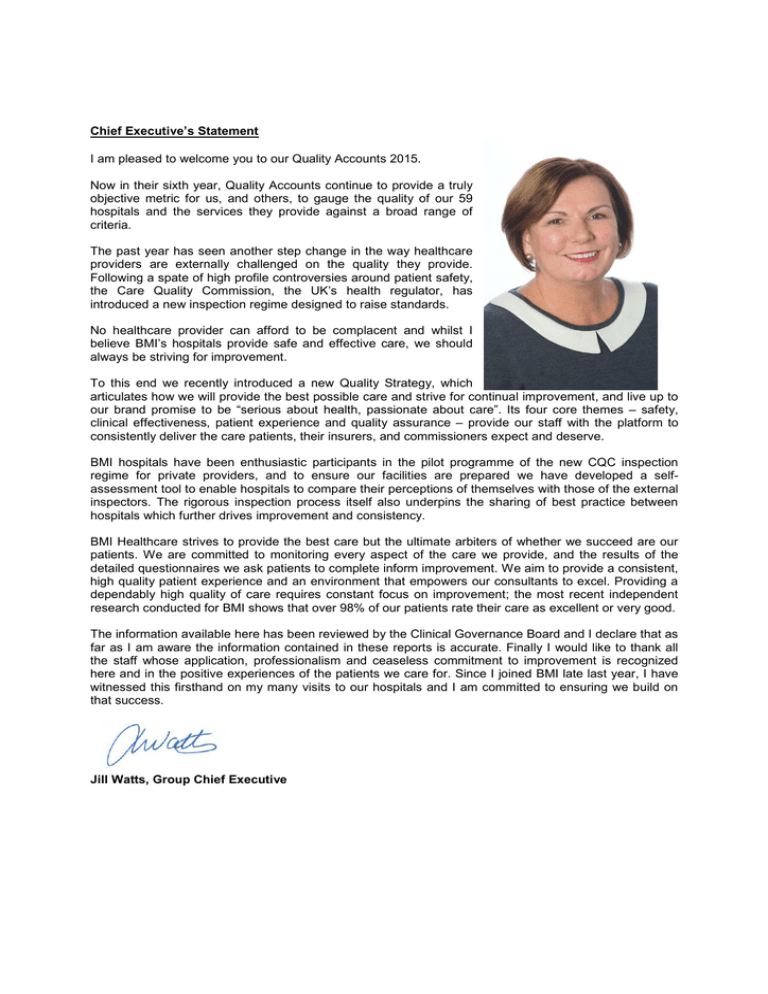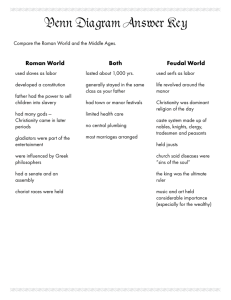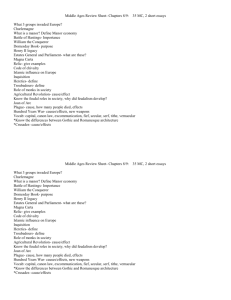
Chief Executive’s Statement
I am pleased to welcome you to our Quality Accounts 2015.
Now in their sixth year, Quality Accounts continue to provide a truly
objective metric for us, and others, to gauge the quality of our 59
hospitals and the services they provide against a broad range of
criteria.
The past year has seen another step change in the way healthcare
providers are externally challenged on the quality they provide.
Following a spate of high profile controversies around patient safety,
the Care Quality Commission, the UK’s health regulator, has
introduced a new inspection regime designed to raise standards.
No healthcare provider can afford to be complacent and whilst I
believe BMI’s hospitals provide safe and effective care, we should
always be striving for improvement.
To this end we recently introduced a new Quality Strategy, which
articulates how we will provide the best possible care and strive for continual improvement, and live up to
our brand promise to be “serious about health, passionate about care”. Its four core themes – safety,
clinical effectiveness, patient experience and quality assurance – provide our staff with the platform to
consistently deliver the care patients, their insurers, and commissioners expect and deserve.
BMI hospitals have been enthusiastic participants in the pilot programme of the new CQC inspection
regime for private providers, and to ensure our facilities are prepared we have developed a selfassessment tool to enable hospitals to compare their perceptions of themselves with those of the external
inspectors. The rigorous inspection process itself also underpins the sharing of best practice between
hospitals which further drives improvement and consistency.
BMI Healthcare strives to provide the best care but the ultimate arbiters of whether we succeed are our
patients. We are committed to monitoring every aspect of the care we provide, and the results of the
detailed questionnaires we ask patients to complete inform improvement. We aim to provide a consistent,
high quality patient experience and an environment that empowers our consultants to excel. Providing a
dependably high quality of care requires constant focus on improvement; the most recent independent
research conducted for BMI shows that over 98% of our patients rate their care as excellent or very good.
The information available here has been reviewed by the Clinical Governance Board and I declare that as
far as I am aware the information contained in these reports is accurate. Finally I would like to thank all
the staff whose application, professionalism and ceaseless commitment to improvement is recognized
here and in the positive experiences of the patients we care for. Since I joined BMI late last year, I have
witnessed this firsthand on my many visits to our hospitals and I am committed to ensuring we build on
that success.
Jill Watts, Group Chief Executive
Hospital Information
BMI Fawkham Manor Hospital is a 35 bedded hospital situated in the very picturesque village of
Fawkham. It is accessible by road with the local railway station within 4 miles having excellent
links to London and the international station of Ebbsfleet within 6 miles. It has two wards named
Mulberry and Hawthorne including one High Dependency bed. This also incorporates an
oncology room in our recently refurbished upstairs ward. Each room offers the privacy and
comfort of en-suite facilities, satellite TV and telephone. Our convalescent rooms oversee the
beautiful grounds of the Manor. We have seven spacious consulting rooms, physiotherapy and
pharmacy departments on site, two operating theatres and 1 minor procedures theatre. The
hospital has an imaging Suite with a mobile MRI Scanner 3 days per week and a mobile CT
Scanner 1 day each week.
In the past year, we have had approval to build a static MRI scanner in the grounds of the
Manor. Carpets have been replaced with vinyl in various clinical areas. Rooms and corridors
have been re decorated on the ward and in outpatients as well as new carpets in the corridors
to keep the hospital fresh and welcoming to our customers. All the theatre flooring has been
replaced.
The percentage of NHS patients for this financial year was 43.6%. Choose and book equated to
38.5% and our Spot work was 5.1%. This is a slight increase in last year’s figures and we are
pleased that we continue to be the hospital of choice for our patients, working closely with the
local NHS trust.
BMI Healthcare are registered as a provider with the Care Quality Commission (CQC) under the
Health & Social Care Act 2008. BMI Fawkham Manor Hospital is registered as a location for the
following regulated services:•
•
Treatment of disease, disorder and injury
Surgical procedures
•
•
Diagnostic and screening
Family Planning
The CQC carried out an unannounced inspection on 16th December 2014 and found the
following compliance by meeting the required standard. These results are published on the
CQC website.
Care and Welfare of people who use the service
Cleanliness and Infection Control
Assessing and Monitoring the quality of service provision
Fawkham Manor has a local framework through which clinical effectiveness, clinical incidents
and clinical quality is monitored and analysed. Where appropriate, action is taken to
continuously improve the quality of care. This is through the work of a multidisciplinary group
and the Medical Advisory Committee.
Regional Clinical Quality Assurance Groups monitor and analyse trends and ensure that the
quality improvements are operationalised. There has been development of
At corporate level the Clinical Governance Board has an overview and provides the strategic
leadership for corporate learning and quality improvement.
There has been ongoing focus on robust reporting of all incidents, near misses and outcomes.
Data quality has been improved by ongoing training and database improvements. New reporting
modules have increased the speed at which reports are available and the range of fields for
analysis. This ensures the availability of information for effective clinical governance with
implementation of appropriate actions to prevent recurrences in order to improve quality and
safety for patients, visitors and staff.
At present we provide full, standardised information to the NHS, including coding of procedures,
diagnoses and co-morbidities and PROMs for NHS patients.There are additional external
reporting requirements for CQC, Public Health England (Previously HPA) CCGs and Insurers
BMI is a founding member of the Private Healthcare Information Network (PHIN) UK – where
we produce a data set of all patient episodes approaching HES-equivalency and submit this to
PHIN for publication. The data is made available to common standards for inclusion in
comparative metrics, and is published on the PHIN website http://www.phin.org.uk. This website
gives patients information to help them choose or find out more about an independent hospital
including the ability to search by location and procedure.
1. Safety
1.1 Infection prevention and control
.
The focus on infection prevention and control continues under
the leadership of the Group Director of Infection Prevention and
Control and Group Head of Infection Prevention and Control, in
liaison with the Infection Prevention and Control Lead at
Fawkham Manor Hospital.
We have had: •
0.00 MRSA bacteraemia cases/100,000 bed days
• 0.00 MSSA bacteraemia cases /100,000 bed days
•
0.00 E.coli bacteraemia cases/ 100,000 bed days
•
0.00 cases of hospital apportioned Clostridium difficile in the last 12 months.
• SSI data is also collected and submitted to Public Health England for Orthopaedic
surgical procedures. Our rates of infection are;
o
o
0.00 Hips
0.00 Knees
Infection Prevention Quality Improvement Tools are used to complete environmental audits in
clinical areas. The system is moving to an electronic reporting system. Action plans are
developed to target identified issues. Theatre audit has been completed for this year and the
Wards audit is underway.
Improvements and review of the current situation is continuous. Bedpan macerators have been
replaced on both wards, carpets have been replaced with vinyl in various clinical areas, hand
wash facilities are on an improvement programme and departmental cleaning schedules are
monitored.
High Impact Interventions, Care Bundles are completed monthly in Theatres and the Wards.
These include Peripheral intravenous cannula care, urinary catheter care and Prevention of
Surgical Site infection.
Focus for improvement includes documentation and investigation of current pre-op skin
preparations and recording of patient’s temperature during the peri-operative period.
Hand hygiene audits are completed in clinical areas to assess appropriate cleaning of hands as
well as adherence to “Bare Below the Elbow” policy. Initially there was some education and
reminders required for the “BBE” but practice has improved and departments generally record
100% compliance.
Workshops are run on a monthly basis for Hand Hygiene and ANTT with the inclusion of
information on the relevance of surgical site infection surveillance, Care Bundle implementation
and Sepsis recognition and treatment. Information given also includes reference to the current
problem of antimicrobial resistance in terms of organisms and use of antibiotics.
Environmental cleanliness is also an important factor in infection prevention and our patients
rate the cleanliness of our facilities highly.
Results from In patient survey data 2015
1.2 Patient Led Assessment of the Care Environment (PLACE)
We believe a patient should be cared for with compassion and dignity in a clean, safe environment.
Where standards fall short, they should be able to draw it to the attention of managers and hold the
service to account. PLACE assessments will provide motivation for improvement by providing a clear
message, directly from patients, about how the environment or services might be enhanced.
In 2013 we introduced PLACE, which is the new system for assessing the quality of the patient
environment, replacing the old Patient Environment Action Team (PEAT) inspections. The 2013
results are below as we await the results of 2014 which took place on the 24th April 2015.
The assessments involve patients and staff who assess the hospital and how the environment
supports patient’s privacy and dignity, food, cleanliness and general building maintenance. It focuses
entirely on the care environment and does not cover clinical care provision or how well staff are
doing their job.
Summary of PLACE Audit 2013 for Fawkham Manor Hospital showed that overall the audit
results were good with a few areas for improvement.
The toilet facilities appeared to be the main areas for amendment. A minor works project up
dated the disabled toilet on the ground floor and minor changes were made to one of the toilet
facilities in the Out Patient department. The male toilet facilities at main reception have also
required some remedial work.
Privacy and dignity scoring was affected by some concern regarding the potential for
conversation between receptionist and patient to be overheard in the main reception area.
There has not been any direct patient complaints regarding this issue, but staff are mindful of
the situation.
Our housekeeping department are an effective team as regards general cleanliness and our in
house catering facilities can provide varied quality meals to suit most appetites.
1.3 Venous Thrombo-embolism (VTE)
BMI Healthcare, holds VTE Exemplar Centre status by the Department of Health across its
whole network of hospitals including Fawkham Manor Hospital. BMI Healthcare was awarded
the Best VTE Education Initiative Award category by Lifeblood in February 2013 and were the
Runners up in the Best VTE Patient Information category.
We see this as an important initiative to further assure patient safety and care. We audit our
compliance with our requirement to VTE risk assessment every patient who is admitted to our
facility and the results of our audit on this has shown 100% compliance. We intend to maintain
this result within the pre assessment department for safety and best practice for all patients
admitted to Fawkham Manor Hospital.
Fawkham Manor reports the incidence of Venous Thromboembolism (VTE) through the
corporate clinical incident system. It is acknowledged that the challenge is receiving information
for patients who may return to their GPs or other hospitals for diagnosis and/or treatment of VTE
post discharge from the Hospital. As such we may not be made aware of them. We continue to
work with our Consultants and referrers in order to ensure that we have as much data as
possible
.
Effectiveness
2.1 Patient reported Outcomes (PROMS)
Patient Reported Outcome Measures (PROMs) are a means of collecting information on the
effectiveness of care delivered to NHS patients as perceived by the patients themselves.
PROMs is a Department of Health led programme.
For the current reporting period, the tables below demonstrate that the health gain between
Questionnaire 1 (pre-operative) and Questionnaire 2 (post–operative) for patients undergoing
hip replacement and knee replacement.
Fawkham Manor hospital participates in this programme but in the below reporting period show
less than 30 patients participation and therefore cannot be scored.
April 14 – September 14
Fawkham Manor
England
Oxford Hip Score average
Health gain between reporting
Q1
Q2
periods
*
*
*
18.16
40.081
21.922
Copyright © 2013, The Health and Social Care Information Centre. All Rights Reserved.
April 14 – September 14
Fawkham Manor
England
Oxford Knee Score average
Health gain between reporting
Q1
Q2
periods
*
*
*
19.401
36.103
16.702
Copyright © 2013, The Health and Social Care Information Centre. All Rights Reserved.
2.2 Enhanced Recovery Programme (ERP)
The ERP is about improving patient outcomes and speeding up a patient’s recovery after
surgery. ERP focuses on making sure patients are active participants in their own recovery and
always receive evidence based care at the right time. It is often referred to as rapid recovery, is
a new, evidence-based model of care that creates fitter patients who recover faster from major
surgery. It is the modern way for treating patients where day surgery is not appropriate.
ERP is based on the following principles:1. All Patients are on a pathway of care
a. Following best practice models of evidenced based care
b. Reduced length of stay
2. Patient Preparation
a. Pre Admission assessment undertaken
b. Group Education sessions
c. Optimizing the patient prior to admission – i.e HB optimisation, control comorbidities, medication assessment – stopping medication plan.
d. Commencement of discharge planning
3. Proactive patient management
a. Maintaining good pre-operative hydration
b. Minimising the risk of post-operative nausea and vomiting
c. Maintaining normothermia pre and post operatively
d. Early mobilisation
4. Encouraging patients have an active role in their recovery
a. Participate in the decision making process prior to surgery
b. Education of patient and family
c. Setting own goals daily
d. Participate in their discharge planning
At BMI Fawkham Manor Hospital, ERP has been maintained as a main the main focus with
quarterly committee meetings that has been working closely with anaethetists and
physiotherapists from the local NHS trust hospital. The Av LOS has decreased for hip
replacements from 3.9 days to 3.5 and knee replacements from 4 days to 3.6 by following the
ERP pathway.
2.3 Unplanned Readmissions within 31 days and unplanned returns to theatre.
Unplanned readmissions and unplanned returns to theatre are normally due to a clinical
complication related to the original surgery.
, BMI Fawkham Manors rates remain very low. All incidents are investigated and discussed at
monthly Clinical Governance meetings with written reports from the consultants explaining the
reasons for readmission or return to theatre.
2. Patient experience
3.1 Patient satisfaction
BMI Healthcare is committed to providing the highest levels of quality of care to all of our
patients. We continually monitor how we are performing by asking patients to complete a patient
satisfaction questionnaire. Patient satisfaction surveys are administered by an independent third
party.
Year
2013
2014
2015
199
329
697
96.9
96
96.3
97.9
97.8
97.7
93.8
96.2
97
87.7
95.5
94.3
91.6
92.7
89.1
97.9
98.1
99.3
Responses
Nursing Care
Arrival process
Accomodation
Catering
Discharge procedure
Quality of Care
Our response rate over this year has continued to increase from 40% to 53%. We continue to
make this a main focus as we value our patients feedback, both negative and positive to
improve customer service. If someone has taken the time to inform us of shortfalls, then we will
look at this as a gift remembering that you can loose sense of what it is like for a person using
the service.
The table above shows we improve in areas to make the patient experience at Fawkham
Manor Hospital a safe and high standard journey. Areas where we haven’t shown
improvement we will focus in these areas, listening and learning from the feedback received.
The 6C’s launched by Jane Cummings, Chief Nursing Officer for England in late 2012, continue
to be a fundamental part to the provision of Healthcare and we use these principles to meet and
maintain high standards. This is underpinned by BMI’s tagline “ Serious about Health.
Passionate about care”.
3.2 Complaints
In addition to providing all patients with an opportunity to complete a satisfaction survey BMI
Fawkham Manor Hospital actively encourages feedback both informally and formally. Patients
are supported through a robust complaints procedure, operated over three stages:
Stage 1: Hospital resolution
Stage 2: Corporate resolution
Stage 3: Patients can refer their complaint to independent adjudication if they are not satisfied
with the outcome at the other 2 stages.
The number of complaints remains low at Fawkham Manor. Every complaint is thoroughly
investigated and the patient receives a written response within ten days. In addition every effort
is made to address the issue of concern to prevent a recurrence of any similar issues to
continuously improve the quality of care for our patients.
3. CQUINS
The CQUINS completed successfully at Fawkham Manor have been;
•
NEWS scoring of the deterioating patient
•
48 hour post operative home call
•
Early mobilisation for hip and knee replacements
To maintain high scores, all clinical staff attend training for the deterioating patient and complete
the Acute Illness Management (AIMS) course. All patients have up to 3 attempted calls 48 hours
after discharge to intercept any complications and to offer reassurance. Our physiotherapists
work twilight shifts to allow patients to be mobilised in the evenings following their surgery.
Patient Quality Team meetings are held bi monthly and all Heads of Departments attend to
discuss patient survey results and implement changes to improve our services. The patients
voice is very important to learn and improve service provision.
4. National Clinical Audits
Fawkham Manor Hospital was only eligible to participate in National Joint Registry audit and all
joint replacements are submitted to this. BMI hospital data is from page 196 onwards in
attached latest NJS report. Fawkham Manor data is on page 224.
•
131 procedures performed by 5 orthopaedic consultants
•
100% consent rate
•
95% linkability of proportion of records including a valid NHS number compared to
numbers on NJR
•
42% Male patients
•
Average age 66.7
All areas for Fawkham Manor Hospital were in the green compliance indication above 99.9%
compliance.
5. Research
No NHS patients were recruited to take part in research.
6. Priorities for service development and improvement
Based on what our patients tell us and all our monitoring activity we will be focusing on the
following areas;
• Engagement with NHS commissioners for appropriate quality indicators.
• The discharge process to improve the patient journey
• Post discharge support with the 48 hour post- operative follow up telephone call at home
• Achieve early mobilization for post- operative joint replacement patients in line with ERP
• At the success of the mobile MRI scanning facilities introduced in 2012, we have
approval to replace this with a static MRI scanner
7.
Mandatory Quality Indicators
8.1 The value of the summary hospital-level mortality indicator (SHMI) for the Fawkham Manor
Hospital or the reporting period.
Unit
0.00
Reporting Periods
(at least last two
reporting periods)
Oct 2012 – Jun 2014
National
Average
Highest National
Score
Lowest National
Score
0.9987
1.1849
0.58345
8.2 The Fawkham Manor patient reported outcome measures scores for
(i) Groin hernia surgery
Unit
0
Reporting Periods
(at least last two
reporting periods)
Apr 14 – Sept 14
National
Average
Highest National
Score
Lowest National
Score
0.0786
0.278
-0.112
Less than 30 patients going through the process, site cannot be scored
(ii) Varicose vein surgery
Unit
0
Reporting Periods
(at least last two
reporting periods)
Apr 14 – Sept 14
National
Average
Highest National
Score
Lowest National
Score
-7.395
-1.957
-12.571
There are no scores for BMI Healthcare, site cannot be scored
(iii) Hip replacement surgery
Unit
0
Reporting Periods
(at least last two
reporting periods)
Apr 14 – Sept 14
National
Average
Highest National
Score
Lowest National
Score
21.542
28.6
9.714
Less than 30 patients going through the process, site cannot be scored
(iv) Knee replacement surgery during the reporting period.
Unit
0
Reporting Periods
(at least last two
reporting periods)
Apr 14 – Sept 14
National
Average
Highest National
Score
Lowest National
Score
16.641
24.429
5.833
Less than 30 patients going through the process, site cannot be scored
8.3 (i) The percentage of patients aged 0-14 readmitted to a hospital which forms part of the
Fawkham Manor Hospital within 28 days of being discharged from a hospital which forms part of
the hospital during the reporting period.
Unit
0
Reporting Periods
(at least last two
reporting periods)
Apr 11 - Mar 12
National
Average
Highest National
Score
Lowest National
Score
11.45
14.35
7.96
8.3.(ii)The percentage of patients aged 15 or over readmitted to a hospital which forms part of
the Fawkham Manor Hospital within 28 days of being discharged from a hospital which forms
part of the hospital during the reporting period.
Unit
0.1765
Reporting Periods
(at least last two
reporting periods)
Apr 11 – Mar 12
National
Average
Highest National
Score
Lowest National
Score
10.01
14.51
5.54
8.4 The Fawkham Manor Hospital responsiveness to the personal needs of its patients during
the reporting period.
Unit
97.44
Reporting Periods
(at least last two
reporting periods)
2013-2014
National
Average
Highest National
Score
Lowest National
Score
68.7
85
54.4
8.5 The percentage of patients who were admitted to Fawkham Manor Hospital and who were
risk assessed for venous thromboembolism during the reporting period.
Unit
100%
Reporting Periods
(at least last two
reporting periods)
Apr 14 – Jan 15
National
Average
Highest National
Score
Lowest National
Score
95
100
87
8.6 The rate per 100,000 bed days of cases of C difficile infection reported within the Fawkham
Manor Hospital amongst patients aged 2 or over during the reporting period.
Unit
0
Reporting Periods
(at least last two
reporting periods)
Apr 13 – Mar 14
National
Average
Highest National
Score
Lowest National
Score
14.7
37.1
0
8.7 The number and, where available, rate of patient safety incidents reported within the
Fawkham Manor Hospital during the reporting period, and the number and percentage of such
patient safety incidents that resulted in severe harm or death.
Number of patient safety incidents reported
Unit
0
Reporting Periods
(at least last two
reporting periods)
Oct 13 – Sep 14
National
Average
Highest National
Score
Lowest National
Score
20
139
0
Rate of patient safety incidents reported (Incidents per 100 Bed Days)
Unit
0
Reporting Periods
(at least last two
reporting periods)
Oct 13 – Sep 14
National
Average
Highest National
Score
Lowest National
Score
3.589
7.496
0.0245
Number of patient safety incidents that resulted in severe harm or death
Unit
0
Reporting Periods
(at least last two
reporting periods)
Oct 13 – Sept 14
National
Average
Highest National
Score
Lowest National
Score
40.2
97
0
Percentage of patient safety incidents that resulted in severe harm or death (Incidents per 100
Admissions)
Unit
0.0
Reporting Periods
(at least last two
reporting periods)
Oct 13 – Sept 14
National
Average
Highest National
Score
Lowest National
Score
0.3
2.4
0.0
8.8 The percentage of staff employed by the (name of hospital) during the reporting period, who
would recommend the Fawkham Manor Hospital as a provider of care to their family or friends.
Unit
98%
Reporting Periods
(at least last two
reporting periods)
2014
National
Average
Highest National
Score
Lowest National
Score
64.58
96.43
33.73
8. Non-Mandatory Quality Indicators
9.1 The percentage of patients who received care as inpatients or discharged from A &E during
the reporting period, who would recommend the Fawkham Manor Hospital as a provider of care
to their family or friends.
Unit
82.02
Reporting Periods
(at least last two
reporting periods)
Jun 13 – Jan 14
National
Average
Highest National
Score
Lowest National
Score
66.23
94.38
35.63
The Fawkham Manor Hospital considers that this data is as described for the following reasons;
Patients enjoy their stay at Fawkham Manor and are very complimentary of all staff which is
clearly demonstrated in the Quality Health questionnaire responses. Fawkham Manor Hospital
will continue to maintain this high quality care and will continue to value customer responses to
always improve quality within the patient experience at Fawkham Manor Hospital.








